Recent Mold Remediation Posts
How to Remove Mold From Your Home
1/20/2020 (Permalink)
 Your home should- and can- look this good.
Your home should- and can- look this good.
Knowing the facts about mold is helpful household information. However, many of the details and truths about mold can get lost in the process. This is the case especially when it comes to the fact that we can search any process online through all of the blogs that exist. A number of unaccredited, sourceless websites can post processes without actual facts about things like, for example, how to remove mold from the home. For instance, some people believe bleach can kill mold. That’s not true. While it can possibly temporarily remove the mold, the spores from the initial mold will grow back within a couple of weeks of spraying the bleach. Similarly, people may consider simply painting over the mold. The truth is that mold cannot be painted over. Even if it could be, that would pose a long term threat to the safety of the home because the mold would still impact the air quality. The truth is that mold can only be properly removed with equipment by professionals. There isn’t an article online that can teach the ways of mold removal in the safest possible way. Most of the life hacks centered around mold removal do not acknowledge that mold spores can exist unseen even after we remove the mold. Mold spores can wait for the proper environment and begin the fruition process as soon as those environmental needs are met. Therefore, only professionals can create a genuinely safe removal process of mold.
If you find mold in your home, call your local SERVPRO of Beavercreek at (937) 228-3433. SERVPRO of Beavercreek is an affordable option for mold remediation. They’ll assess the damage and walk you through the process required in order to make your home “like it never even happened.”
How Common is Mold
12/23/2019 (Permalink)
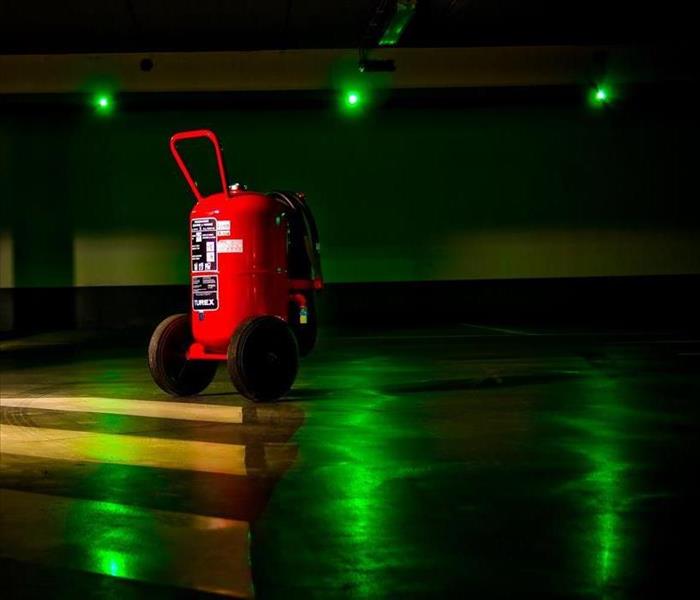 We may not be able to see all of the possible mold growth, but that isn't something that should immediately cause stress.
We may not be able to see all of the possible mold growth, but that isn't something that should immediately cause stress.
A common belief is that a truly clean building has absolutely no mold in it. The reason why this is more of a myth than a fact is because it would be a waste of time to attempt to completely rid the building of mold. While mold can pose a threat to the safety of a home, office, store, or any other building, mold is still a part of the environment. It will always go naturally outside a building and it will always try and grow within a building, being that it only needs certain requirements to grow. Requirements like dampness and a certain temperature. Since these conditions can happen anywhere, of course mold will attempt to grow indoors just as easily as outdoors. It isn’t the end of the world, nor is it even noticeable, to have a few stray mold spores floating around. How do you know when mold is posing a threat? You can tell mold is posing a threat to your safety when it grows enough to take over a certain area of the building’s infrastructure. Mold like this won’t grow without a moist environment, so if you do find mass amounts of mold growth then something is probably wrong and you should hire a restoration company to analyze the environment. SERVPRO of East Dayton will come to your home, scan the air for moisture, measure the size of the room, and give you a complete analysis of the damage done. Once this initial procedure is over, they’ll send a team of highly trained restoration professionals to use their intensive cleaning equipment. This equipment will dry out the area of impact, creating an unsuitable environment for further mold growth. In addition, they will remove the affected area in order to stop any possible effects of the mold. Mold often seems like a scary, mysterious danger that could happen when you least expect it. But so long as you stay aware of the possible causes of water damage and mold growth in a building, you can avoid your family, coworkers, or employees from experiencing the hazardous effects of mold growth. If you’re ever in need of fast, professional mold remediation, then hire your local SERVPRO of East Dayton. If it’s an emergency, and better safe than sorry, call now: (937) 228-3433.
What Type of Mold is in Your Home?
10/29/2019 (Permalink)
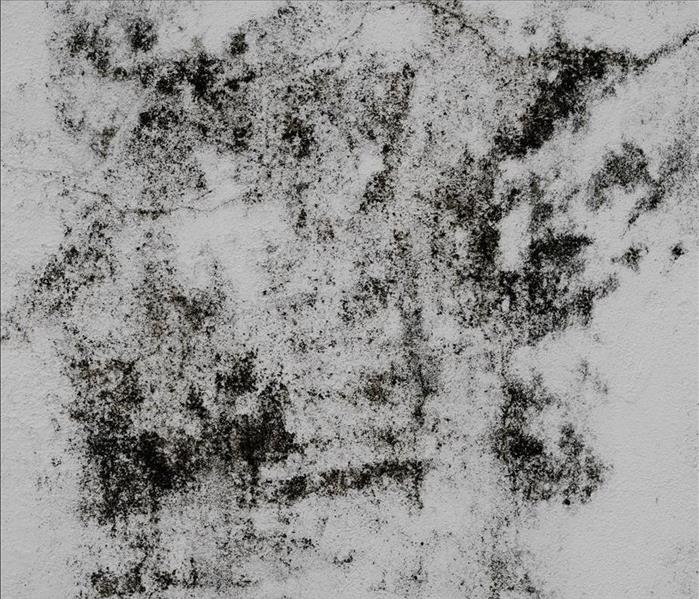 Danger presented from mold varies by type. Have a professional check.
Danger presented from mold varies by type. Have a professional check.
There are over 10,000 species of mold, that we’re aware of, in the world. Don’t worry, though. Only 5 of these 10,000 species are commonly found inside of our houses. These 5 types vary in danger, but nonetheless all 5 need to be removed as quickly as possible.
One type is Alternaria, which comes from water damage. Materials retaining water create an attractive atmosphere for this type of mold. Once growing, it can cause allergic reactions and asthma for anyone living in close proximity to it.
Another type is Aspergillus, which is the most common type we know of. It causes respiratory infections and inflammation, posing more of a danger than the typical allergic reactions that come from mold. It prefers warmer temperatures.
Cladosporium grows is lower temperatures than its’ fellow mold, but just as easily triggers asthma in anyone in contact with it.
One of the more musty smelling types of mold is Penicillium, which grows specifically on carpet, wallpaper, and insulation. Its’ strong odor can bring attention to it. Though we hopefully find it first due to the strong odor, sometimes bugs find it before us, attracted to the moldy stench it creates.
And finally, the one we have heard about through scary tales, Stachbotrys Chartarum or black mold. It is the most dangerous of the five household molds, being that it causes severe health issues to anyone in contact with it. It grows anywhere that water damage has been sitting, undealt with, creating the perfect atmosphere for growth. The longer the water damage stays in one spot, the easier it is for black mold to grow and pose a health threat.
If you have any reason to believe mold is growing in your home, get a mold remediation specialist to give you peace of mind. SERVPRO of East Dayton and Beavercreek can be at your home in a timely manner to assure the safety of your home.
How Quickly Does Mold Grow?
10/29/2019 (Permalink)
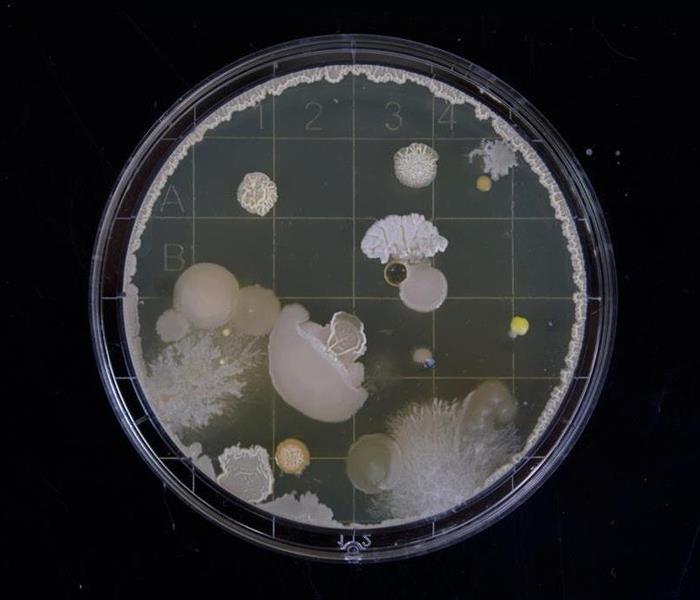 We can't see the process that takes place in the mold life cycle until its already begun doing damage.
We can't see the process that takes place in the mold life cycle until its already begun doing damage.
Molds develop as quickly as 24 to 48 hours but can remain hidden until the spores are large enough to have done considerable damage. Even worse, dead mold spores can continue to be just as harmful to our health as live mold spores. The life cycle of mold takes four main steps. While there are complicated words and processes that occur, here is the life cycle of mold in the simplest form:
Once an environment has created ideal conditions for mold growth, spores begin to germinate. Then they break off and travel through either air or water.
Spores can stay dormant until in the ideal environment. In such conditions, they begin to swell, growing to a much bigger size.
The swollen spore consumes enzymes of the organic material it grows off, breaking down the nutrients to grow even bigger.
Once large enough, the structure the mold grew on becomes weak, being consumed by the now fully grown mold. Reproduction of spores now occurs.
The process of mold growth is something out of a biology class, not easy to remember and rarely useful, even if we find mold in our own homes. In the case of finding mold in your home, the best thing to do is to call a mold remediation specialist to contain, control, and remove the mold and its source of growth. Contact your local SERVPRO of East Dayton today to see how they can help you avoid further growth and damage to your home.
Mold Attracts Many Types of Bugs
10/29/2019 (Permalink)
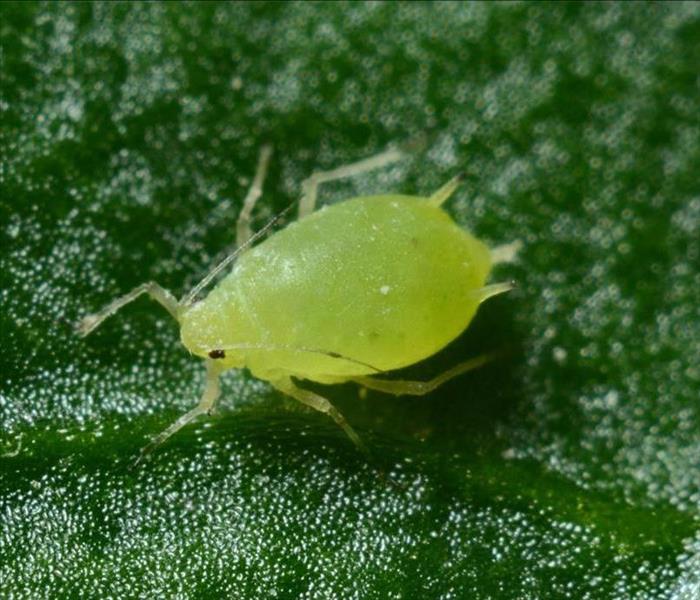 Sometimes the smaller the bug, the scarier they can be. We aren't aware of every type of bug that affects our lives.
Sometimes the smaller the bug, the scarier they can be. We aren't aware of every type of bug that affects our lives.
Mold attracts a number of bugs due to the fact that it breaks down things that bugs commonly consume. Cockroaches are attracted to moldy areas because mold breaks down paper, cockroaches food of choice. The mold makes the paper easier to digest which allows the nasty little bugs to consume lots of it, easier, and therefore repopulate faster. A thriving environment for cockroaches is anywhere mold has reached wallpaper or a bookshelf. Likewise, booklice enjoy mold for the same reason. Moldy paper is easier to digest for booklice the same way it is for cockroaches. Mold mites, on the other hand, consume the mold directly. Though this almost seems ideal, being that they feast on the mold itself, mold mites produce hairs on their bodies that cause allergic reactions for humans. These hairs float off of their bodies and into the air and is undetectable to us. We may have a reaction to mold mites without even knowing that they’re there. The odor produced by mold attracts termites, being that termites know where there is mold there is weakened wood to consume.
Knowing that bugs are attracted to mold is frustrating because these bugs create damage in our homes just as much as the mold and water damage. What started as a simple leak or build up now result in multiple sources of home damage. Because of this, the best time to act on the discovery of water damage or mold is as soon as it is found. To make things easy, give a call to your local SERVPRO of East Dayton. They know water damage and mold remediation, so you’re in good hands. In addition to be specialists as this field, they know about the promptness necessary in attacking mold, so they’ll be at your door soon after you make the call. They care as much about your home as you do.
How Mold Makes Your Home Dangerous
10/29/2019 (Permalink)
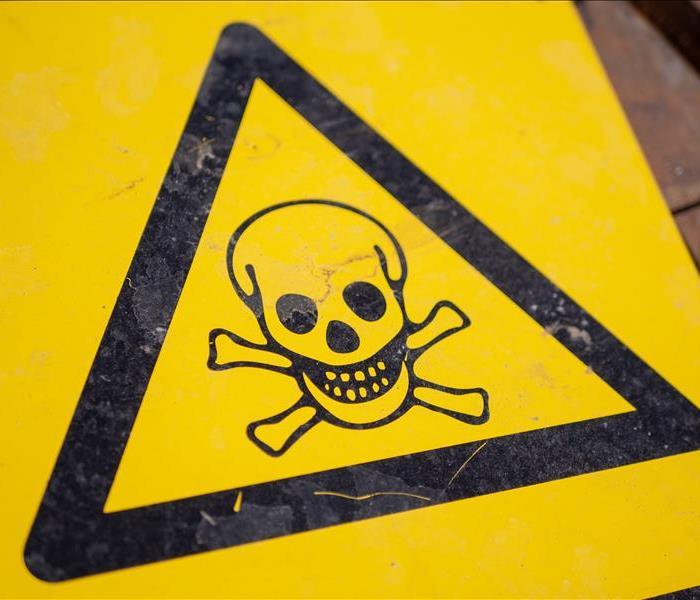 Mold can make our homes a dangerous place to be, especially if we aren't aware that the mold has even began to grow.
Mold can make our homes a dangerous place to be, especially if we aren't aware that the mold has even began to grow.
Mold damage costs homeowners in the United States $73 billion a year, on average. Every year mold alone ruins more wood than fires and termites together. Mold produces mycotoxins, which are toxic chemicals that can be poisonous. However, despite some popular myths, the musty smell that comes with mold is not the smell of mycotoxins being produced. Fortunately, if you worry that you’ve been exposed to mycotoxins, there are simple urine tests that can be done to detect the presence in your body. However in order to detect it in the home a mold specialist is required to conduct a mold control test. Since the average homeowner does not have an easy way of knowing what kind of mold is growing in their home, the first step is to call a mold specialist, like SERVPRO, and get an assessment done. But what does a mold specialist do when they come to our homes? Well first they’ll do an air sample. Mold spores can travel through air, undetectable to the human eye. If the source of the mold is found, for instance water damage in a specific area, then a surface sample will be taken there. Once the samples have been reviewed and mold has been confirmed in the air or surface, your local mold specialist will arrive in safety gear and begin the removal process. Fortunately, companies like SERVPRO of Beavercreek have 24/7 emergency response so we don’t have to wait around to know about the safety of our homes. Sooner than you think, a mold remediation specialist could be arriving in their gear and with their tests, ready to give you the information you need to keep your home safe.
Containment during a mold job
10/4/2019 (Permalink)
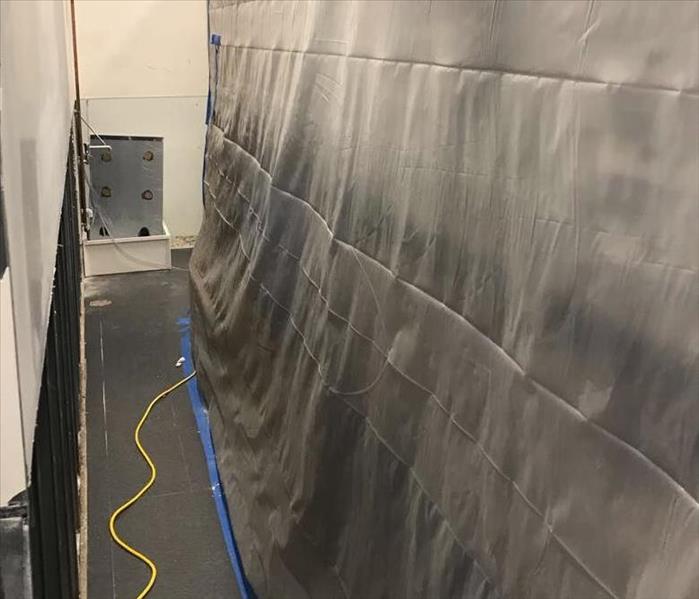 Containment Wall
Containment Wall
During a mold clean up job, it is important that the restoration professionals are putting up containment to isolate the affected areas so that any airborne mold spores are not being spread into other areas of the home or business. In the restoration industry, it is a known fact that mold spores move in the air very quickly when disturbed. A properly contained room is one that is separated by heavy plastic and has a Hepa vacuum inside to purify the air and causes negative air pressure. If a room is not contained correctly it is very possible that the mold spores will be spread to other affected areas. Here at SERVPRO of East Dayton, our staff is highly trained in mold remediation and how to properly set up containment walls.
How many different species of Mold are there?
9/13/2019 (Permalink)
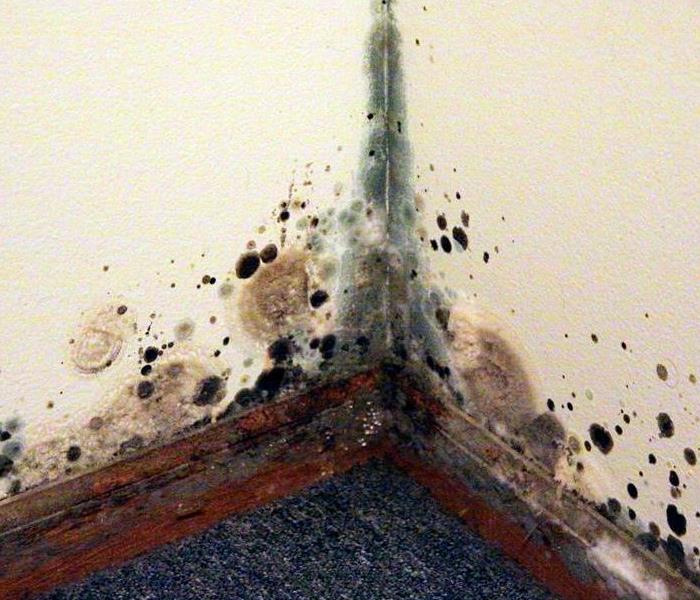 Chaetomium Mold
Chaetomium Mold
According to the CDC, no one truly knows how many different types of mold that is out there but it is possible to be over 300,000. Although we do not know all the types of molds we are aware of the four most common molds that get mold remediation.
Most common Molds found in Ohio:
- Cladosporium- Black and green in color, this mold has a pepper-like appearance and can be found on surfaces like toilets, fiberglass ducts, fabrics, and wood. Although it is not toxic, it can cause irritation and allergy-like symptoms, such as watery eyes, sore throats, or respiratory problems.
- Penicillium- Typically blue or green, this mold can easily be transferred from room to room, and it is common on wallpaper and textiles like carpets, mattresses, or curtains. It can cause allergic reactions, sinus infections, and lung inflammation.
- Chaetomium – Often found in buildings that have suffered extensive water damage Chaetomium produces a musty odor and is dark green, brown, or black in color. Although it rarely causes health issues in humans, it can be an indication of more serious mold problems.
- Aspergillus- This mold can often be found in air duct systems and on foods high in starch, such as bread and potatoes. The most common species feature a yellow-green surface coloring, with brown underneath, and they can cause allergic reactions, repository infections, and inflammation of the lungs.
Beavercreek Residents: Follow These Mold Safety Tips If You Suspect Mold
9/6/2016 (Permalink)
If you see visible mold, do not disturb it. You can inadvertently spread the mold infestation throughout your home. When mold is disturbed, the mold can release microscopic mold spores which become airborne and can circulate inside your home.
What to Do:
- Stay out of affected areas.
- Turn off the HVAC system and fans.
- Contact SERVPRO of East Dayton/Beavercreek for mold remediation services.
What Not to Do:
- Don’t touch or disturb the mold.
- Don’t blow air across any surfaces with visible or suspected mold growth.
- Don’t attempt to dry the area yourself.
- Don’t spray bleach or other disinfectants on the mold.
About Our Mold Remediation Services
SERVPRO of East Dayton/Beavercreek specializes in mold cleanup and restoration, in fact, it’s a cornerstone of our business. Our crews are highly trained restoration professionals that use specialized equipment and techniques to properly remediate your mold problem quickly and safely.
If You See Signs of Mold, Call Us Today – 937-228-3433



 24/7 Emergency Service
24/7 Emergency Service






